Top ten easy to grow vegetables, fruit and salad
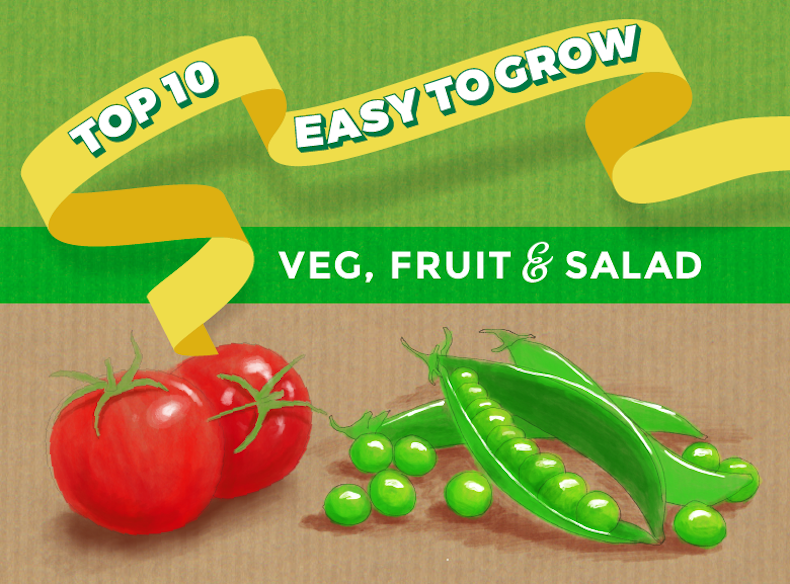
Fill your garden with these easy to grow vegetables
Image: Thompson & Morgan
Do you dream of harvesting your own home grown vegetables, but don't know where to start? Whether you have a few containers on the balcony or a full-sized allotment, there are plenty of delicious fruits and vegetables that are easy to grow yourself. Here are ten of the best fruit, veg and salad crops for beginners…
- Salad leaves
- Radishes
- Potatoes
- Peas
- Spring onions
- Broad beans
- Runner beans
- Onions and garlic
- Tomatoes
- Beetroot
To help get you started, see our full infographic below. We've also broken it down into handy, bite-sized sections explaining why each of these crops made our top ten and sharing specific growing tips along the way. Caught the grow-your-own bug? Browse our huge range of vegetable plants for more inspiration.
1. Salad leaves
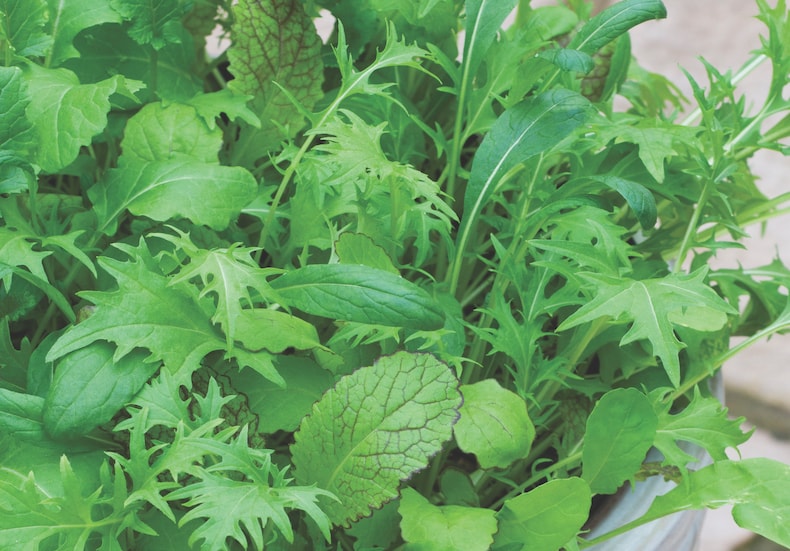
Leaves are super easy to grow all year round
Image: Salad leaves 'Nice 'n' Spicy' from Thompson & Morgan
You don’t even need a garden to grow your own salad leaves. Simply sow salad leaf seeds into a tray of moist compost, place it on a sunny windowsill, and enjoy a fresh crunchy crop in as little as three weeks. For an outdoor crop, sow your seeds into patio containers, window boxes, raised beds or the ground from late spring. If you sow more seeds every two-three weeks, harvesting individual leaves as you need them, you’ll prolong your cropping season.
Easy salad leaf varieties to try: Salad leaves 'Nice 'n' Spicy' mixed contains a spicy blend of textures and flavours with a peppery kick. For a colourful and attractive mix of red and green lettuce leaves, sow ‘Crunchy Blend’ seeds as a tasty salad base or to add to sandwiches.
2. Radishes
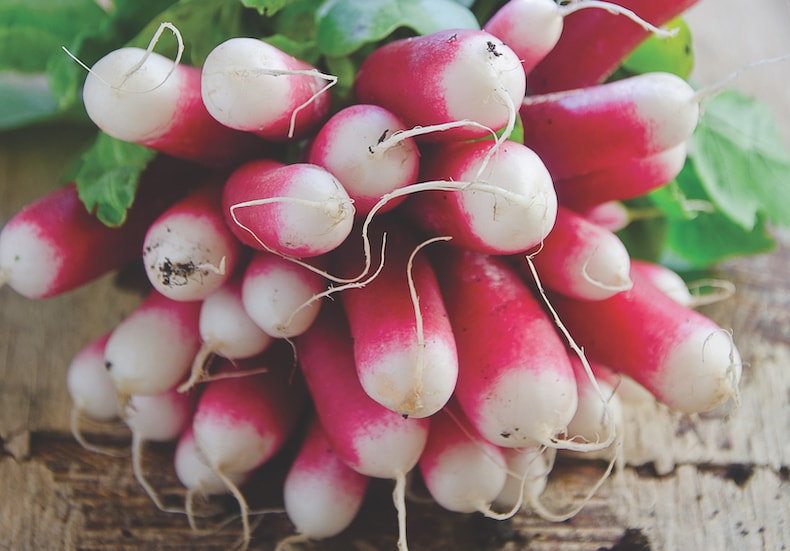
Radishes are a quick crop to add heat to raw dishes
Image: Radish 'French Breakfast 3' from Thompson & Morgan
Radishes are super quick and easy to grow from seed - you’ll be able to enjoy your own crunchy peppery roots just four weeks after sowing. They’re best sown outdoors in containers or beds around late spring (after the last frost). When they’re ready, use in salads, stir-fries and ramen, or add a thinly-sliced layer to a piece of toast and drizzle with salt and lemon juice.
Easy radish varieties to try: Radish 'French Breakfast 3' is a popular variety that holds an RHS Award of Garden Merit. For a vibrant mixture of purple, red, white and gold roots, try the flavoursome radish 'Rainbow Mixed'.
3. Potatoes
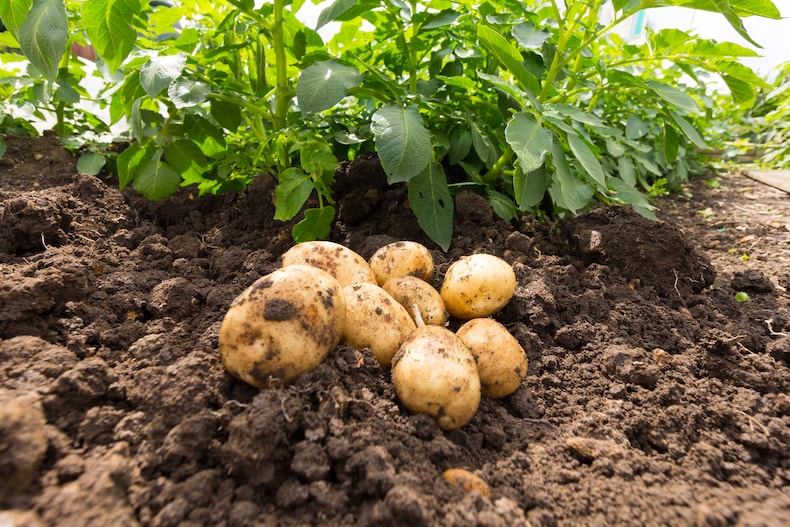
Digging up home grown potatoes is such a treat
Image: Potato 'Homeguard' from Thompson & Morgan
The easiest way to grow your own spuds is by planting seed potatoes in large tubs or bags on the patio. As long as you protect them from frost, you can plant your tubers in plenty of organic matter or compost from March onwards. Just remember to water them well and ‘earth up’ your potato shoots as they grow. Harvesting is extra easy - simply tip the container out onto a sheet of plastic and hunt through. Read our article on how to grow potatoes in bags if you want to give it a go.
Easy potato varieties to try: Potato 'Rocket' is an excellent first early variety. A heavy-cropping addition to the veg patch, these white-fleshed tubers are quick and easy to grow. Want some maincrop potatoes to plant in containers? Our âMaris Piper Patio Kitâ includes five specialist grow bags.
4. Peas
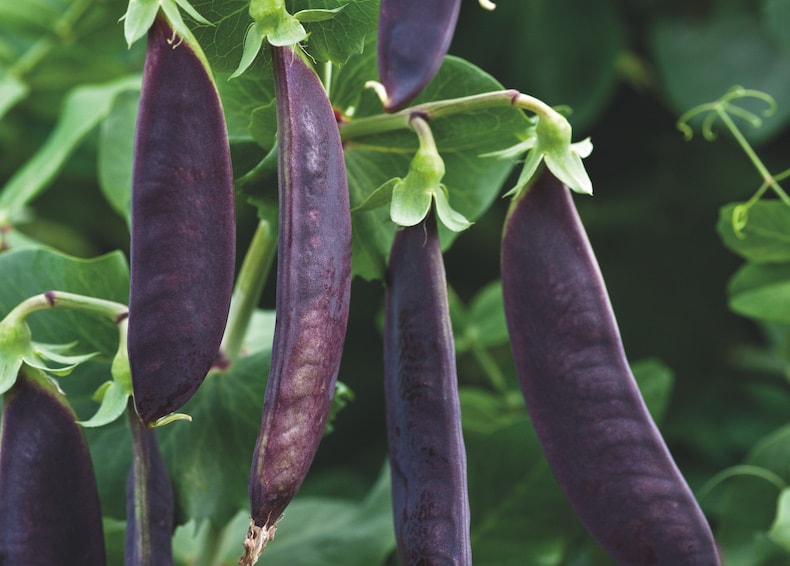
Mangetout pea ‘Shiraz’ has delicious crunchy nearly black pods
Image: Pea 'Shiraz' Mangetout from Thompson & Morgan
Peas are the perfect crop if you live in a cool and damp area, and you can choose from a wide range of shelling peas, crunchy mangetout and sugar snap pods. Sow your pea seeds directly in the ground between March and June, remembering to support these climbing plants with canes and chicken wire. They’ll be ready to pick about two to three months later, between June and August. The best part? The more you pick, the more your pea plants produce!
Easy pea varieties to try: Holding an Award of Garden Merit, pea 'Kelvedon Wonder' produces deliciously plump peas. For something a bit different, mangetout ‘Shiraz’ has dark purple, almost black, edible pods and attractive bi-colour flowers. And if you’re after a huge yield of large shelling peas that you can use to stock your freezer, go for pea ‘Rondo’.
5. Spring onions
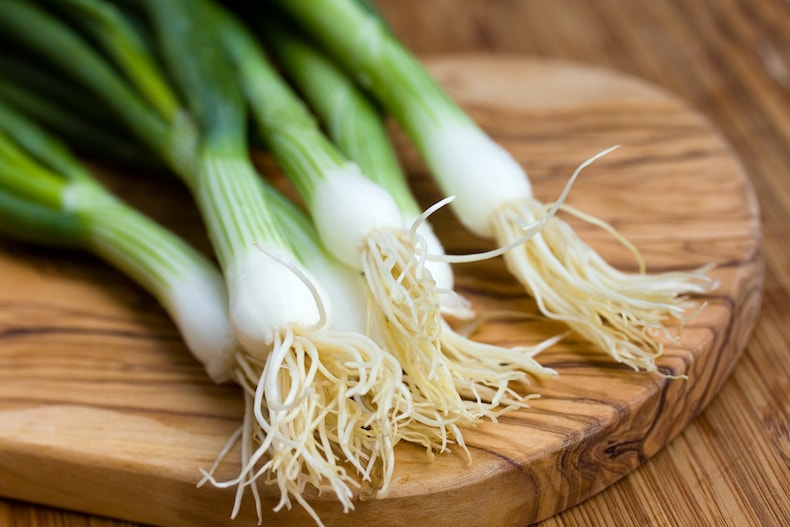
Spring onions are a delicious addition to potato salad
Image: Spring onion 'Performer' from Thompson & Morgan
Spring onions produce a quick crop just eight weeks after sowing. Sow your seeds between March and July, and if you want to make next year's crop even easier, leave a couple of spring onions to flower and they'll happily self seed! These compact but tasty vegetables can be grown in patio containers, window boxes or the ground. Top tip - grow your spring onions next to mint to deter onion fly.
Easy spring onion varieties to try: Sow spring onion 'Performer' for a mild flavour and straight white stems that are perfect for slicing. To get a crop earlier in the year, choose spring onion 'White Lisbon' which can be sown under cover in autumn, ready to harvest through the winter and early the next spring.
6. Broad beans
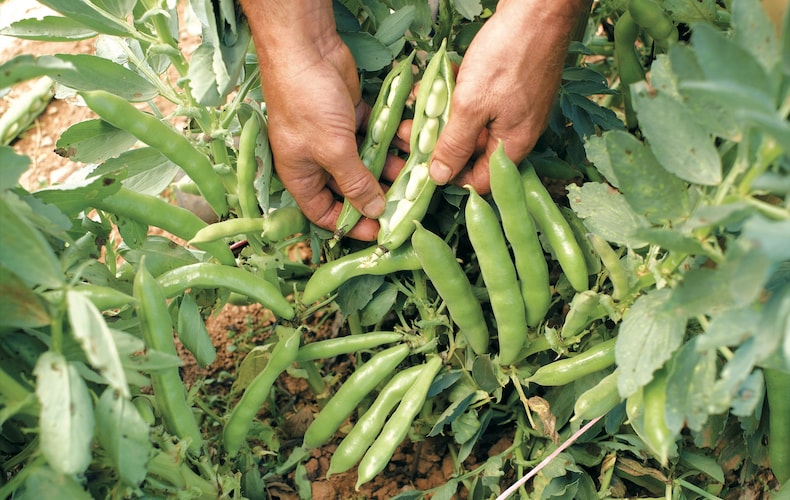
Broad beans are heavy cropping and cold tolerant vegetables
Image: Broad bean 'The Sutton' from Thompson & Morgan
Broad beans are the perfect crop for cold weather. Ideal for successional sowings in spring, you can also start your hardy broad bean seeds any time between November and March for extra early crops. Just make sure the ground isn’t frozen. Keep your plants well watered and provide support if they start to flop, using posts and string.
Easy broad bean varieties to try: Broad bean ‘The Sutton’ is a good choice for container growing because it remains compact and requires little, if any, support. Broad bean 'Robin Hood' also has a compact habit and fantastic yield, while broad bean 'Crimson Flowered' has attractive purple flowers, short pods and extra large beans.
7. Runner beans
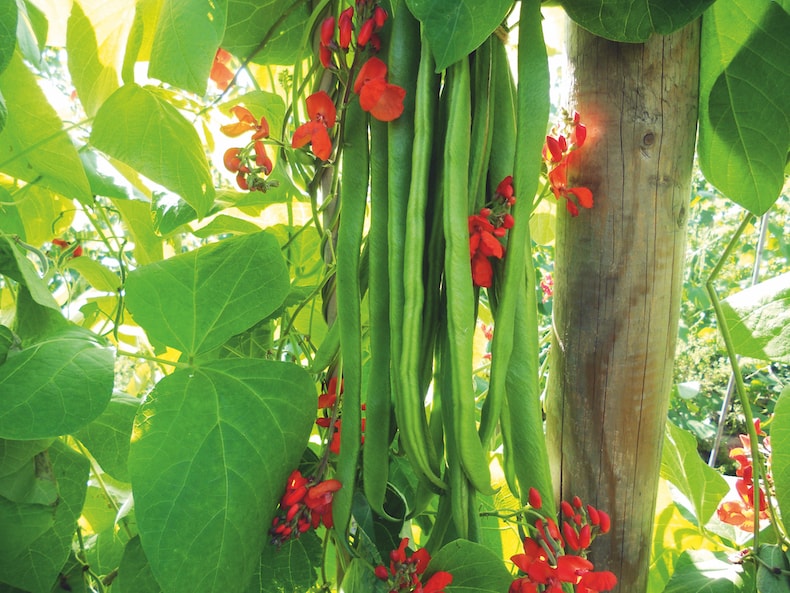
Runner beans are prolific and fast growing
Image: Runner Bean 'Firestorm' from Thompson & Morgan
Sow your runner bean seeds between April and July after the last frost date in your area. Runner beans are rampant growers, so give them a sturdy support and plenty of water as they grow. A single row of beans will reward you with a near constant supply of pods in summer provided you pick them regularly to encourage the plants to keep producing. Harvest the pods when they’re about 15cm long and still tender.
Easy runner bean varieties to try: If you’re short on space, try the dwarf runner bean 'Hestia' which grows to a compact height of 45cm, needs little support and is ideal for growing on the patio. Otherwise try the red-flowered, self-pollinating runner bean ‘Firestorm’ for stringless, sweet pods grown on 3m tall vines.
8. Onions and garlic
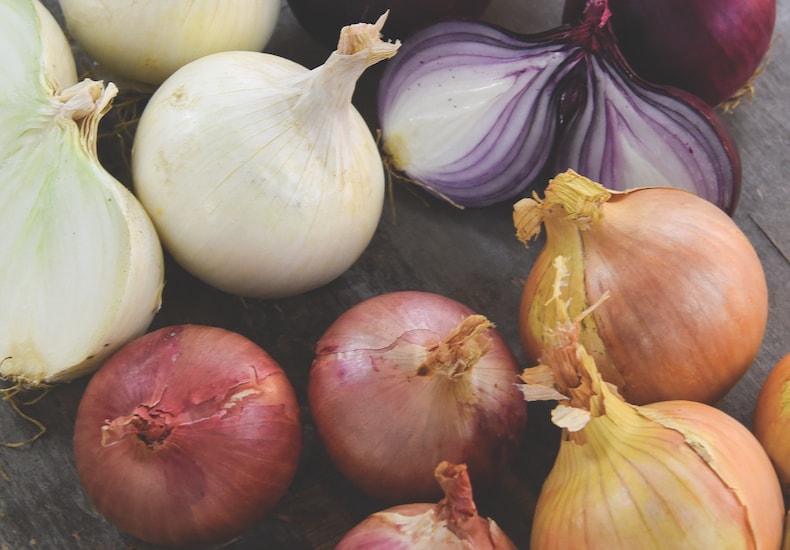
Onions are kitchen garden staples
Image: Onion Four Colour Bulb Mix from Thompson & Morgan
Onions and garlic are virtually maintenance-free vegetables! You can start onions off from seed between February and April ready to transplant outside in May. Alternatively, you can buy onion and garlic sets that are ready to be planted straight outside in spring. Either way, choose a sunny spot. Onions and garlic are ready to harvest when their foliage starts to yellow and flop at the very end of summer. Make sure they’re completely dry before you bring them inside to store.
Easy onion and garlic varieties to try: Onion 'Stuttgarter Giant' is a popular spring-planting variety with excellent flavour. Garlic 'Picardy Wight' is a flavoursome softneck variety that stores well.
9. Tomatoes
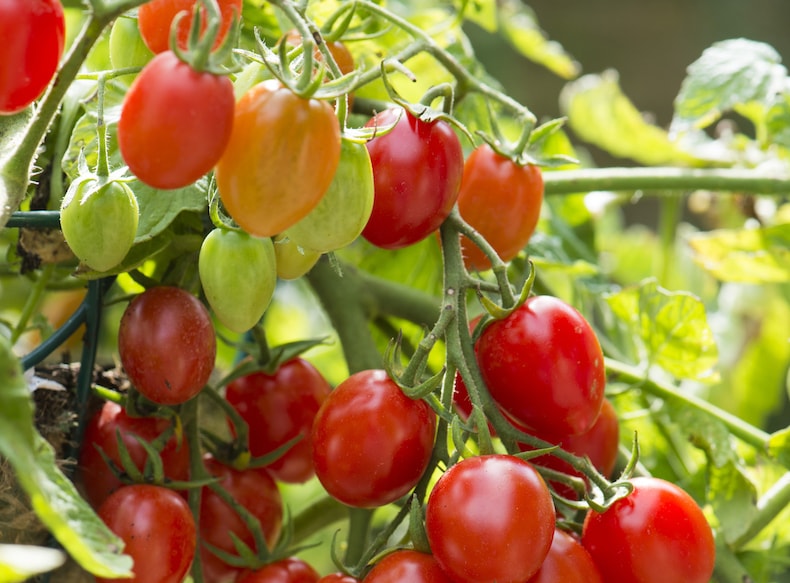
Cherry tomatoes are super sweet and perfect for snacking straight from the vine
Image: Tomato 'Romello' F1 Hybrid from Thompson & Morgan
The easiest way to grow your own tomatoes is by planting grafted and garden-ready tomato plants straight into tomato grow bags. If you choose a low-maintenance bush variety (not a cordon), it won’t require a support cane or the removal of side shoots as it grows. Young tomato plants do need plenty of water, and you should apply a high potash feed every couple of weeks.
Easy tomato varieties to try: Bush tomato 'Veranda' shows fantastic blight-resistance and produces cherry sized tomatoes which have superb sweet flavour. Tomato 'Tiny Temptations Red' is a compact tumbling tomato designed especially for growing in hanging baskets.
10. Beetroot
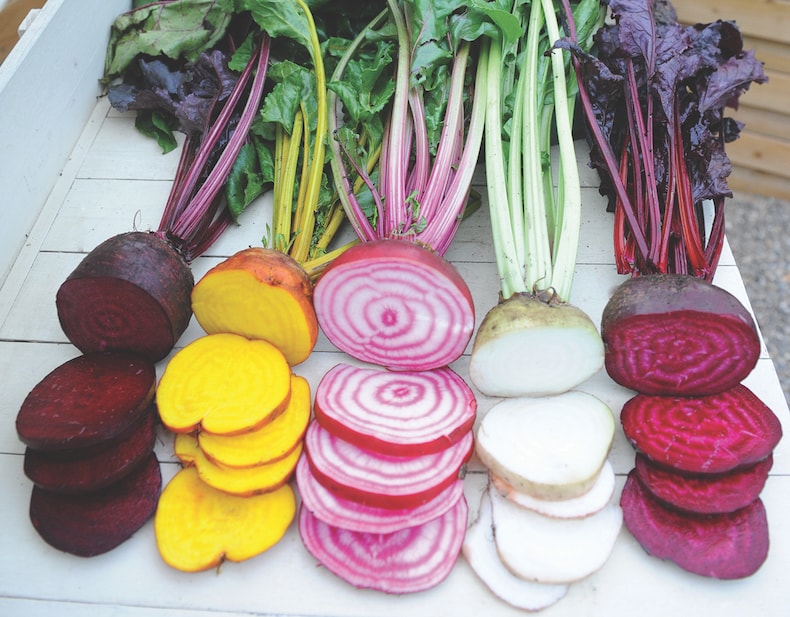
Grow a range of beetroot varieties for a range of fun colours
Image: Beetroot 'Rainbow Beet' from Thompson & Morgan
For a super-easy root vegetable, choose beetroot. Often grated raw into salads, and equally tasty roasted, made into soup, or pickled, it’s a delicious, versatile and colourful crop. Beetroot seeds can be sown directly into moist ground from March to July. As your seedlings grow, simply thin them to about 5cm apart. They should be ready to harvest between May and September once they’ve reached the size of a golf ball.
Easy beetroot varieties to try: Beetroot 'Boltardy' is a very popular variety with classic red flesh, while beetroot 'Boldor' has vibrant orange flesh and a sweet flavour. For a colourful mix, Beetroot ‘Rainbow Beet’ includes five delicious varieties!
Here's the full infographic - there's code below to make sharing this easy for you!

Share this infographic using the code in this block:
Here are some frequently asked questions about growing veg, fruit and salad:
What are the easiest vegetables to grow in containers?
Potatoes and salad leaves are the easiest vegetables to grow in pots. Salad leaves can be picked just four weeks after sowing. Harvesting potatoes grown in containers is far easier than digging them out of the ground. Simply tip them out when the foliage dies back.
What are the easiest vegetables to grow for beginners?
Radishes and peas are super easy to grow. Radishes produce a crunchy root crop three to five weeks after sowing. Peas are cold tolerant, low-maintenance and vigorous croppers.
What's the highest yielding vegetable crop to grow?
Beans are one of the highest yielding crops to grow at home. Go for runner beans - they're great space savers if grown up bean poles and apart from regular harvesting, they're very low maintenance.
We hope you've found this list of easy to grow vegetables helpful. Share your harvests, big or small, with us via social media using #YourTMGarden - we love to hear from you!
See all Top 10 articles
Popular Top 10 Articles
- Top 10 Winter Vegetables
- Top 10 Potato Varieties
- Top 10 Easy-to-grow Fruit
- Top 10 Winter Bedding Plants
- Top 10 Summer Bedding Plants
- Top 10 Spring Flowering Bulbs
- Top 10 Summer Flowering Bulbs
- Top 10 Autumn/ Winter Flowering Bulbs
- Top 10 Evergreen Shrubs
- Top 10 Evergreen Shrubs for Small Gardens
- Top 10 Easy-to-grow Flowers
- Top 10 Cut Flowers
- Top 10 Hanging Basket Plants
- Top 10 Plants for Patios
- Top 10 Houseplants
- Top 10 Climbing Plants
- Top 10 Perennial Plants
- Top 10 Hardy Plants for Winter
- Top 10 Winter Garden Tips
- Top 10 Ornamental Grasses
Sign Up For Exclusive Special Offers




© 2025 Thompson & Morgan. All rights reserved. A division of Branded Garden Products Limited.
Sign up for exclusive offers!



